
Wine Culture and Information since 2002 - Volume 22
 Wine Culture and Information since 2002 - Volume 22 |
|
ChardonnayAmong the most representative international grapes, Chardonnay is present in every wine country and has a countless number of supporters. But also lots of detractors |
|
Chardonnay. This is probably the most common and recognizable term in the wine parlance. For many Chardonnay is even believed to be the name of a wine and they do not even suspect it is instead the name of a grape. It certainly is a very spread and known grape that from its probable homeland, Bourgogne, it spread everywhere in the world and now it is the most used grape for the production of wines, both alone and blended with other grapes. The spreading of Chardonnay is so wide that since tens of years is considered as an international grape, that is present in many wine countries, probably the international grape par excellence. Whether it does exist a model of “international white wine”, this is almost exclusively because of Chardonnay grape and, in particular, the way it is used. Why is Chardonnay so spread and appreciated in the world? Whether it is true Chardonnay has a countless number of supporters, it is also true that many consider it as an overrated grape. The spreading of Chardonnay is mainly because of its excellent capability of adaptation in the many climate conditions and in the many types of soil. Moreover, Chardonnay is appreciated by many wine makers for its pretty “neutral” characteristics and therefore allows the creation of wines according to precise styles. This versatility has given origin to the so called “international style”, very appreciated by many wine lovers and by many wine makers, also thanks to the use of barriques and of specific wine making techniques: Chardonnay can be virtually “shaped” to the will of the producer. This is certainly not a criticism to Chardonnay, it is just a consideration based on the wide selection of wines produced with this grape, however it should be noticed and remembered there are many wines produced with Chardonnay of primary and absolute greatness. Of course, not all Chardonnays are of good quality: its wide usage has given origin to the production of pretty ordinary wines which are sold as exceptional wines just because they are made with this grape. Despite the opinions of its supporters and of its detractors, an indisputable characteristic of this grape is its adaptability, both in the cultivation and in the production of wine. Chardonnay does not have particular organoleptic characteristics that allow a clear recognizability, and it is just this characteristic that make it suitable for the many wine making techniques. Moreover Chardonnay is also one of the main grapes used for the production of sparkling wines - a typical example is Champagne - and it is widely used, alone or blended with other grapes, for the production of dry white wines, pretty infrequently for the production of sweet wines. Dry white wines produced with Chardonnay can be divided into two distinct categories: the ones fermented and/or aged in cask and the ones fermented and aged in containers made of materials different from wood, such as steel. This productive choice greatly influences the organoleptic qualities of the finished product, a factor which affects, of course, any wine. For Chardonnay, because of its versatility and relative neutrality, the choice of the type of containers to be used for the fermentation and the aging represents a fundamental factor.
We already mentioned the fact that Chardonnay is a grape easily cultivable and ensures a good adaptation in every type of soil and climate, however it is a grape which ripes early and has a moderate acidity. This means it must be harvested earlier than the other grapes and, in case the full maturation is allowed, even worse overripeness, its acidity greatly diminishes producing wines with little crispness and too much roundness, in other words, non balanced wines. For this reason Chardonnay is harvested in advance in order to keep its precious acidity, a factor that becomes of absolute importance when the grape is being used for the production of sparkling wines. Despite Chardonnay offers good capacity of adaptation in the many environmental conditions, it however gives the best and more elegant results in areas having a cool climate, such as Bourgogne. Longevity of Chardonnay is also widely influenced by the way it was vinified. The duration can range from two years, just like the majority of white wines, to an average time of six years, and in particular cases, to be usually considered as exceptions, it can also be more than ten years. The elements that mainly determine the longevity of Chardonnay are the aging in cask, more frequently the barrique, and the grape acidity at the time of harvesting. In case aging or fermentation was done in wood containers, the longevity of Chardonnay can also be of six years or more, whereas it loses its best characteristics after about two years in case it was vinified in steel tanks. Among other conditions determining its longevity is to be added the level of ripeness at the time of harvesting, therefore its acidity. It should be noticed in the process of vinification of Chardonnay is usually favored malolactic fermentation, a practice which is usually done in case the wine is being aged in barrique, giving the wine a character of higher aromatic complexity as well as making it rounder and “complex” to the taste. The definition of the organoleptic characteristics of Chardonnay is pretty complex because of the different wine making styles used. This grape, as we already mentioned, can make very ordinary and coarse wines, in case it was cultivated with pretty high yields and vinified with pretty bad wine making techniques, but also wines of absolute value and quality in case it was cultivated with pretty low yields and careful wine making processes. It should be however noticed the use of wood containers widely alters the character of wine and therefore will be noticed aromas and tastes having no direct connection with the ones of the grape. However, thanks to its versatility, Chardonnay has acquired an its own character and personality which are so evident that it is not usually hard to recognize its presence in wines. Moreover, because of its wide spreading in the world, it is pretty hard to define a real and proper identity for Chardonnay as the environmental and climate conditions of the many places, as well as the many wine making styles, contribute to the overall character of the wine and to its organoleptic qualities.
|
||||||||
|
The appearance of wines produced with Chardonnay grape can have pretty different colors. As we already said, this grape is used with many wine making techniques, therefore the process of fermentation done in cask, as well as the aging, will give wine deeper colors which can range from straw yellow to golden yellow. Things change, in general terms, in case the wine was produced in non wooden containers, usually steel or concrete tanks: the color will be paler with evident nuances of greenish yellow. Even the age of wine will affect color: a characteristic that will particularly be noticed in Chardonnays aged in casks, that is the ones more suited to the aging in bottle. After some years the color of Chardonnay changes just like the typical color seen in other white wines, that is a color tending to golden yellow will be accentuated, a characteristic that will also be confirmed by nuances.
|
|
The evaluation of Chardonnay's aromas is strongly influenced by the vinification style and, last but not the least, by the area of origin and climate. Aromas should be divided in at least two fundamental categories: Chardonnays fermented and/or aged in wood and Chardonnays vinified in non wooden containers. This grape has pretty modest aromatic characteristics, therefore it is strongly affected by productive and cultivation factors. Moreover as some wines produced with Chardonnay can be suited for the aging in bottle, it will be opportune to consider the development of aromas over time. Even the development of aromas will be influenced by the wine making techniques used for the production. It should be however remembered most of Chardonnays, even the ones aged in wood, offer their best qualities when consumed in their youth: Chardonnays really suited for the aging of many years are rather few. Young wines produced with Chardonnay and not aged in wooden containers, therefore consumed in their youth, have aromas of white pulped fruits, such as apple and pear, sometimes citrus fruits as well. Chardonnays produced in cool areas or early harvested, can have aromas of apple, pear, lemon, peach and even melon and mineral aromas. The aromas change when the grape was harvested in warmer areas or when it reaches full maturation: ripe apple, peach, pineapple, passion fruit and tropical fruit. In wines aged in cask the aromatic character passed from wood becomes pretty evident, also according to the duration of toasting of wood and the way it is used, therefore will be perceived aromas of vanilla and toasted wood. Some wines produced with Chardonnay also undergoes the malolactic fermentation process, a production phase which is also used for wines not aged in wood. In this case will be perceived less fresh aromas as well as aromas of ripe fruit: often are also perceived clear aromas of banana and butter. The development of aromas in Chardonnays aged in non wooden containers will be characterized by aromas of cooked fruit and frequently honey as well, last but not the least, aromas of vegetal origin. For Chardonnays aged in wood, the aging in bottle can give origin to more complex and interesting aromas, such as honey, butter, caramel, coffee, toasted wood and hazelnut.
|
||||
|
Chardonnay is a grape having a pretty modest acid component, however when it is harvested early or cultivated in areas having a cool climate, this organoleptic quality can be pretty evident and positively contributes to balance. The general custom is to make Chardonnays with a pretty high alcoholic percentages, even more than 13%, an essential factor in order to have a proper balance in case acidity is pretty evident. The gustatory difference is strongly influenced by the way Chardonnay was vinified: wines produced with aging or fermentation in steel tanks have a higher acidity and a taste that resembles fresh fruit, whereas the ones produced in wooden containers have a rounder, richer and more complex character with a more robust structure.
|
|
Chardonnay certainly is among the most known and common grapes in the world and the organoleptic qualities of its wines are strongly influenced by the production area, but also and mainly by the wine making style. The reference area which strongly influenced the style of the wines produced with this grape is its homeland, Bourgogne, in which are found excellent examples of Chardonnays both produced by making use of wooden containers and of other types. Among the examples of Burgundian Chardonnays produced in steel tanks are to be mentioned the ones from Chablis and Mâconnais, whereas for Chardonnays aged in wood can be mentioned the ones produced in the Côte de Beaune, in particular at Meursault, Chassagne-Montrachet and Puligny-Montrachet. Wines produced in these places have strongly influenced the producers of Chardonnay in the world, however in every area can be noticed a certain typicality. In qualitative productions, Chardonnay is made by making use of cask, probably because producers want to satisfy what the majority of consumers would expect to find in the taste of an “international” wine, however it should be remembered it certainly is not the use of cask that makes quality in a wine. For example Chardonnays produced in Chablis, where the majority of producers do not make use of barrique, can be considered as absolute examples of elegance and class. In Italy Chardonnay is widely spread and here producers vinify it both alone and blended with other grapes, in both cases can be aged in cask or in steel tanks. The production of Chardonnay in the wine countries of the so called “New World” is mainly made by fermenting and/or aging the wine in barrique. Typical examples can be offered by Chardonnays produced in Australia, New Zealand, South Africa, as well as in Chile, Argentina and United States of America, where wines produced with this grape usually have a high alcoholic percentage and a pretty evident “wooden” character.
|
Wines of the Month |
|
|
|
Score legend Prices are to be considered as indicative. Prices may vary according to the country or the shop where wines are bought |
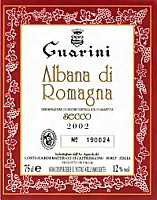
|
|
Albana di Romagna Secco 2002 |
|
| Guido Guarini Matteucci (Italy) | |
| Grapes: Albana | |
| Price: € 3,80 | Score: |
| This wine shows an intense straw yellow color and nuances of straw yellow, very transparent. The nose reveals good personality with intense, clean and pleasing aromas which start with hints of jasmine, honey and apple followed by aromas of chamomile, lily, hawthorn and pear. In the mouth has good correspondence to the nose, a crisp attack and however balanced, good body, intense flavors, agreeable. The finish is persistent with flavors of apple, honey and pear. | |
| Food Match: Mushrooms and vegetables soups, Pasta and risotto with vegetables and fish, Boiled fish | |
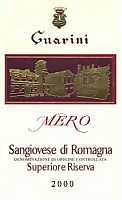
|
|
Sangiovese di Romagna Superiore Riserva Mero 2000 |
|
| Guido Guarini Matteucci (Italy) | |
| Grapes: Sangiovese | |
| Price: € 6,20 | Score: |
| This wine shows a brilliant ruby red color and nuances of ruby red, moderate transparency. The nose reveals good personality with clean, intense and pleasing aromas which start with hints of black cherry and plum followed by pleasing aromas of blueberry, toasted wood, tobacco, licorice, vanilla and pleasing hints of cocoa and menthol. In the mouth has good correspondence to the nose, a slightly tannic attack and however balanced by alcohol, good body, intense flavors, good tannins. The finish is persistent with flavors of black cherry, plum and blueberry. Mero ages for 8 months in steel tanks and for 12 months in cask followed by 6 months of aging in bottle. | |
| Food Match: Roasted meat, Broiled meat and barbecue, Hard cheese | |
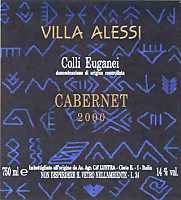
|
|
Colli Euganei Cabernet Villa Alessi Vigna Girapoggio 2000 |
|
| Ca' Lustra (Italy) | |
| Grapes: Cabernet Franc (60%), Cabernet Sauvignon (40%) | |
| Price: € 10,80 | Score: |
| This wine shows a brilliant ruby red color and nuances of ruby red, little transparency. The nose reveals intense, clean, pleasing and elegant aromas which start with hints of black cherry and plum followed by good aromas of blueberry, black currant, violet, vanilla and pleasing hints of licorice and chocolate. In the mouth has good correspondence to the nose, a slightly tannic attack and however well balanced by alcohol, good body, intense flavors. The finish is persistent with pleasing flavors of black cherry, plum and blueberry. This wine ages in cask for at least 24 months. | |
| Food Match: Roasted meat, Braised and stewed meat, Hard cheese | |
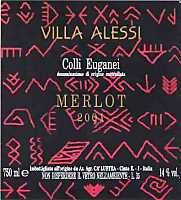
|
|
Colli Euganei Merlot Villa Alessi Vigna Sasso Nero 2001 |
|
| Ca' Lustra (Italy) | |
| Grapes: Merlot | |
| Price: € 9,40 | Score: |
| The wine shows an intense ruby red color and nuances of purple red, little transparency. The nose reveals intense, clean, pleasing and elegant aromas that start with hints of black currant and black cherry followed by good aromas of green bell pepper, plum, licorice, vanilla and pleasing hints of chocolate and tobacco. In the mouth has good correspondence to the nose, a slightly tannic attack and however well balanced by alcohol, good body, intense flavors, agreeable. The finish is persistent with good flavors of black currant, plum and black cherry. This Merlot ages in cask for at least 24 months. | |
| Food Match: Braised and stewed meat with mushrooms, Roasted meat, Hard cheese | |
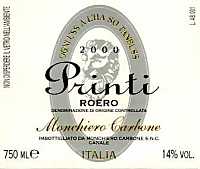
|
|
Roero Printi 2001 |
|
| Monchiero Carbone (Italy) | |
| Grapes: Nebbiolo | |
| Price: € 25,00 | Score: |
| The wine shows a beautiful and intense ruby red color and nuances of ruby red, little transparency. The nose reveals good personality with intense, clean, pleasing, refined and elegant aromas that start with hints of black cherry and violet followed by good and intense aromas of blueberry, plum, licorice, menthol, thyme and pleasing aromas of toasted wood and vanilla. In the mouth has good correspondence to the nose, a slightly tannic attack and however well balanced by alcohol, full body, intense flavors, good tannins. The finish is persistent with good and intense flavors of black cherry and plum. A well made wine. This Roero ages in cask for at least 24 months followed by one year of aging in bottle. | |
| Food Match: Braised and stewed meat, Game, Roasted meat, Hard cheese | |
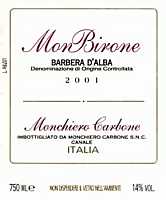
|
|
Barbera d'Alba MonBirone 2001 |
|
| Monchiero Carbone (Italy) | |
| Grapes: Barbera | |
| Price: € 20,00 | Score: |
| The wine shows an intense ruby red color and nuances of ruby red, little transparency. The nose reveals good personality with intense, clean, pleasing, elegant and refined aromas which start with good hints of black cherry and plum followed by good and intense aromas of raspberry, carob, toasted wood, blueberry, blackberry, licorice, vanilla and pleasing hints of cocoa, menthol and black pepper. In the mouth has good correspondence to the nose, a slightly tannic attack and a pleasing crispness, however well balanced by alcohol, full body, intense flavors. The finish is persistent with good flavors of black cherry, blueberry and plum. MonBirone ages in barrique for 12-18 months followed by an aging in bottle of at least 9 months. | |
| Food Match: Braised and stewed meat, Game, Roasted meat, Hard cheese | |
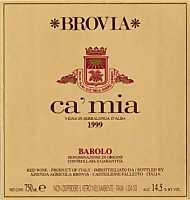
|
|
Barolo Ca'Mia 1999 |
|
| Brovia (Italy) | |
| Grapes: Nebbiolo | |
| Price: € 30,50 | Score: |
| The wine shows a brilliant ruby red color and nuances of garnet red, moderate transparency. The nose reveals intense, clean, pleasing and elegant aromas which start with hints of black cherry jam and dried violet followed by pleasing aromas of raspberry jam, blueberry, plum, licorice, tobacco and pleasing hints of vanilla and leather. In the mouth has good correspondence to the nose, a slightly tannic and pleasingly crisp attack however well balanced by alcohol, good body, intense flavors, good tannins. The finish is persistent with good flavors of black cherry, raspberry and blueberry. This Barolo ages in cask for about 2 years. | |
| Food Match: Braised and stewed meat with mushrooms, Game, Roasted meat, Hard cheese | |
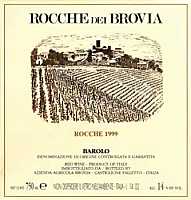
|
|
Barolo Rocche 1999 |
|
| Brovia (Italy) | |
| Grapes: Nebbiolo | |
| Price: € 30,50 | Score: |
| This Barolo shows a brilliant ruby red color and nuances of garnet red, moderate transparency. The nose reveals good personality with intense, clean, pleasing and elegant aromas which start with hints of violet, cherry and raspberry followed by good aromas of strawberry jam, plum jam, licorice, menthol and pleasing hints of vanilla and leather. In the mouth has good correspondence to the nose, a slightly tannic and pleasingly crisp attack however well balanced by alcohol, good body, intense flavors, good tannins. The finish is persistent with good flavors of cherry and raspberry. This Barolo ages in cask for about 2 years. | |
| Food Match: Braised and stewed meat, Roasted meat, Game, Hard cheese | |
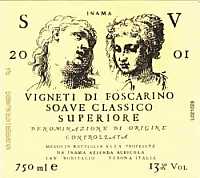
|
|
Soave Classico Superiore Vigneti di Foscarino 2001 |
|
| Inama (Italy) | |
| Grapes: Garganega | |
| Price: € 12,00 | Score: |
| The wine shows a brilliant straw yellow color and nuances of greenish yellow, very transparent. The nose reveals good personality with intense, clean, pleasing and elegant aromas that start with hints of pear, broom and toasted wood followed by good aromas of hawthorn, banana, almond, grapefruit, apple, plum, vanilla and pleasing hints of avocado. In the mouth has good correspondence to the nose, a crisp attack however well balanced by alcohol, good body, intense flavors, agreeable. The finish is persistent with flavors of pear, plum and almond. A well made wine. This Soave ferments and ages in barrique for 8 months. | |
| Food Match: Roasted fish, Pasta and risotto with fish and vegetables, Cold cuts | |
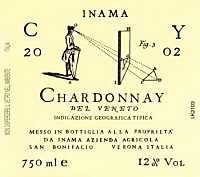
|
|
Chardonnay del Veneto 2002 |
|
| Inama (Italy) | |
| Grapes: Chardonnay | |
| Price: € 7,00 | Score: |
| The wine shows an intense greenish yellow color and nuances of greenish yellow, very transparent. The nose reveals clean, delicate and pleasing aromas which start with hints of banana and acacia followed by aromas of pineapple, broom, litchi, apple and pear. In the mouth has good correspondence to the nose, a crisp attack and however balanced, intense flavors, agreeable. The finish is persistent with flavors of banana and pear. This Chardonnay ferments and ages in steel tanks. | |
| Food Match: Aperitifs, Mushrooms and vegetables soups, Pasta and risotto with vegetables | |
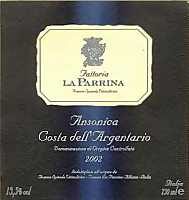
|
|
Ansonica Costa dell'Argentario 2002 |
|
| Tenuta La Parrina (Italy) | |
| Grapes: Ansonica | |
| Price: € 5,20 | Score: |
| The wine shows a brilliant greenish yellow and nuances of greenish yellow, very transparent. The nose reveals clean and pleasing aromas which start with hints of green apple and broom followed by aromas of hawthorn, chamomile, lemon and pear. In the mouth has good correspondence to the nose, a crisp attack and however balanced, intense flavors, agreeable and with good crispness. The finish is persistent with flavors of apple and pear. | |
| Food Match: Vegetables soups, Pasta and risotto with vegetables and crustaceans, Eggs | |
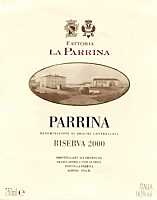
|
|
Parrina Rosso Riserva 2000 |
|
| Tenuta La Parrina (Italy) | |
| Grapes: Sangiovese (70%), Cabernet Sauvignon (10%), Merlot (10%) | |
| Price: € 12,90 | Score: |
| The wine shows an intense ruby red color and nuances of ruby red, little transparency. The nose denotes intense, clean, pleasing and elegant aromas which start with hints of black cherry and blueberry followed by good aromas of raspberry, licorice, plum, violet, vanilla and pleasing hints of chocolate. In the mouth has good correspondence to the nose, a slightly tannic attack and however balanced by alcohol, good body, intense flavors, good tannins, agreeable. The finish is persistent with flavors of black cherry and blueberry. This wine ages for at least one year in barrique followed by an aging in bottle. | |
| Food Match: Stewed and braised meat with mushrooms, Roasted meat, Hard cheese | |
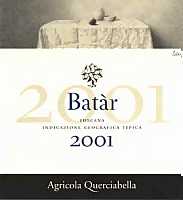
|
|
Batàr 2001 |
|
| Querciabella (Italy) | |
| Grapes: Chardonnay (65%), Pinot Blanc (35%) | |
| Price: € 35,00 | Score: |
| The wine shows a pale golden yellow color and nuances of straw yellow, very transparent. The nose reveals good personality with intense, clean, pleasing, refined and elegant aromas which start with hints of banana, toasted wood and litchi followed by good and intense aromas of coffee, acacia, pineapple, hawthorn, apple, honey, peach, grapefruit and vanilla. In the mouth has very good correspondence to the nose, a crisp and pleasingly round attack, well balanced by alcohol, good body, intense flavors, very agreeable. The finish is persistent with good and intense flavors of banana, grapefruit and apple. A well made wine. Batàr ages for 10 months in barrique and for at least 10 months in bottle. | |
| Food Match: Roasted fish, Stuffed pasta with mushrooms, Roasted white meat, Spiced fish | |
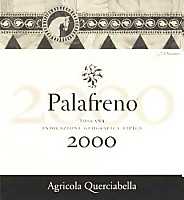
|
|
Palafreno 2000 |
|
| Querciabella (Italy) | |
| Grapes: Merlot (55%), Sangiovese (45%) | |
| Price: € 29,00 | Score: |
| This wine shows an intense ruby red color and nuances of ruby red, little transparency. The nose reveals good personality with intense, clean, pleasing, refined and elegant aromas which start with hints of black cherry, blueberry and plum followed by good aromas of blackberry, tobacco, violet, toasted wood, caramel, licorice, vanilla and hints of cocoa. In the mouth has very good correspondence to the nose, a slightly tannic attack and however balanced by alcohol, full body, good tannins, intense flavors. The finish is persistent with good flavors of black cherry, plum and blueberry. A well made wine. Palafreno ages in barrique for 18 months followed by some months of aging in bottle. | |
| Food Match: Braised and stewed meat, Roasted meat, Game, Hard cheese | |
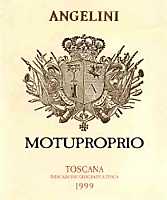
|
|
Motuproprio 1999 |
|
| Tenimenti Angelini (Italy) | |
| Grapes: Cabernet Sauvignon | |
| Price: € 28,00 | Score: |
| This wine shows an intense ruby red color and nuances of ruby red, little transparency. The nose denotes good personality with intense, clean, pleasing and elegant aromas that start with hints of black cherry and plum followed by aromas of blueberry, black currant, toasted wood and hints of carob and cyclamen. In the mouth has good correspondence to the nose, a slightly tannic attack and however balanced, full body, intense flavors, good tannins, agreeable. The finish is persistent with flavors of black cherry, blueberry and plum. Motuproprio ages for 18 months in barrique and for 9 months in bottle. | |
| Food Match: Braised and stewed meat, Roasted meat, Game, Hard cheese | |
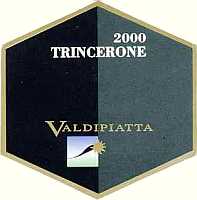
|
|
Trincerone 2000 |
|
| Tenuta Valdipiatta (Italy) | |
| Grapes: Canaiolo Nero (60%), Merlot (40%) | |
| Price: € 15,00 | Score: |
| The wine shows a deep ruby red color and nuances of ruby red, little transparency. The nose reveals intense, clean, pleasing, elegant and refined aromas that start with hints of black cherry and violet followed by good aromas of blueberry, blackberry, plum, black currant, licorice, carob, tobacco and pleasing hints of vanilla and menthol. In the mouth has good correspondence to the nose, a slightly tannic attack and however well balanced by alcohol, full body, intense flavors, good tannins. The finish is persistent with flavors of plum, black cherry and blueberry. A well made wine. Trincerone ages for 12 months in barrique followed by 6 months of aging in bottle. | |
| Food Match: Braised and stewed meat, Roasted meat, Game, Hard cheese | |
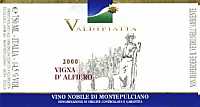
|
|
Vino Nobile di Montepulciano Vigna d'Alfiero 2000 |
|
| Tenuta Valdipiatta (Italy) | |
| Grapes: Prugnolo Gentile | |
| Price: € 21,00 | Score: |
| This wine shows a brilliant ruby red color and nuances of garner red, little transparency. The nose reveals good personality with intense, clean, pleasing, elegant and refined aromas that start with hints of black cherry and violet followed by good aromas of raspberry, blueberry, plum, tobacco, licorice, vanilla, chocolate, menthol and pleasing hints of cinnamon and nutmeg. In the mouth has good correspondence to the nose, a slightly tannic attack and however well balanced by alcohol, full body, intense flavors, good tannins. The finish is persistent with good flavors of plum and black cherry. A well made wine. Vigna d'Alfiero ages for 18 months in barrique followed by 12 months of aging in bottle. | |
| Food Match: Roasted meat, Braised and stewed meat, Game, Hard cheese | |
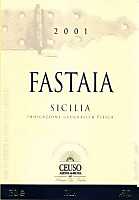
|
|
Fastaia 2001 |
|
| Ceuso (Italy) | |
| Grapes: Nero d'Avola (70%), Cabernet Franc (15%), Merlot (15%) | |
| Price: € 16,00 | Score: |
| This wine shows an intense ruby red color and nuances of ruby red, little transparency. The nose reveals intense, clean, pleasing and elegant aromas that start with hints of black cherry, plum and blueberry followed by aromas of blackberry, violet, licorice, vanilla and hints of carob. In the mouth has good correspondence to the nose, a slightly tannic attack and however balanced by alcohol, good body, intense flavors, good tannins. The finish is persistent with flavors of black cherry, blueberry and plum. Fastaia ages for 6 months in barrique followed by an aging in bottle of 4 months. | |
| Food Match: Roasted meat, Broiled meat and barbecue, Stewed meat, Hard cheese | |
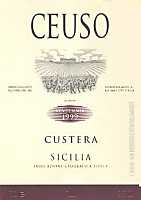
|
|
Custera 1999 |
|
| Ceuso (Italy) | |
| Grapes: Nero d'Avola (50%), Cabernet Sauvignon (30%), Merlot (20%) | |
| Price: € 24,00 | Score: |
| The wine shows a brilliant ruby red color and nuances of garnet red, little transparency. The nose reveals good personality with intense, clean, pleasing, refined and elegant aromas which start with hints of black cherry jam and plum followed by aromas of blueberry, carob, violet, licorice, tobacco, vanilla and pleasing hints of black pepper. In the mouth has good correspondence to the nose, a slightly tannic attack and however well balanced by alcohol, intense flavors, full body, good tannins. The finish is persistent with good flavors of blueberry and black cherry. A well made wine. Custera ages for 12 months in barrique, for 4 months in concrete tanks and for 18 months in bottle. | |
| Food Match: Roasted meat, Braised and stewed meat, Game, Hard cheese | |
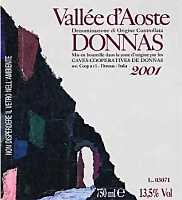
|
|
Vallée d'Aoste Donnas Napoleone 2001 |
|
| Caves Cooperatives de Donnas (Italy) | |
| Grapes: Nebbiolo (95%), Freisa, Neyret (5%) | |
| Price: € 9,00 | Score: |
| This wine shows a brilliant ruby red color and nuances of ruby red, moderate transparency. The nose reveals intense, clean and pleasing aromas that start with hints of cherry and raspberry followed by aromas of blueberry, plum, violet, cyclamen and hints of vanilla and cinnamon. In the mouth has good correspondence to the nose, an alcoholic and slightly tannic attack however balanced, good body, intense flavors, pleasing crispness. The finish is persistent with flavors of cherry and raspberry. This wine ages in barrique for 8-12 months, in cask for 8-12 months and for 8 months in bottle. | |
| Food Match: Roasted meat, Sauteed meat, Broiled meat, Hard cheese | |
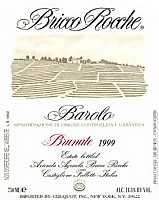
|
|
Barolo Bricco Rocche Brunate 1999 |
|
| Ceretto (Italy) | |
| Grapes: Nebbiolo | |
| Price: € 55,00 | Score: |
| This wine shows a brilliant ruby red color and nuances of garnet red, moderate transparency. The nose reveals good personality with intense, clean, pleasing, elegant and refined aromas which start with good hints of violet and cherry jam followed by intense aromas of black cherry, raspberry jam, plum jam, blueberry, licorice, tobacco, dried rose and pleasing hints of vanilla, cocoa, leather and menthol. In the mouth has very good correspondence to the nose, a slightly tannic attack and however well balanced by alcohol, full body, intense flavors, good tannins, pleasing crispness. The finish is persistent with good flavors of plum, raspberry and blueberry. A well made wine. This Barolo ages in cask. | |
| Food Match: Braised and stewed meat, Roasted meat, Game, Hard cheese | |
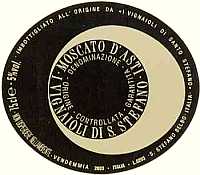
|
|
Moscato d'Asti 2003 |
|
| I Vignaioli di S. Stefano (Italy) | |
| Grapes: Muscat Blanc | |
| Price: € 10,50 | Score: |
| This wine shows a pale straw yellow color and nuances of greenish yellow, good effervescence. The nose reveals intense, clean, pleasing and elegant aromas which start with good hints of peach, litchi and the typical aromaticity of the grape followed by good and intense aromas of banana, melon, pear, broom and pleasing hints of sage. In the mouth has an effervescent attack with a pleasing sweetness and well balanced by crispness, intense flavors, delicate, sweet and very pleasing. The finish is persistent with good flavors of grape, peach and litchi. A well made wine. | |
| Food Match: Cream desserts, Pandoro, Panettone, Semifreddo | |
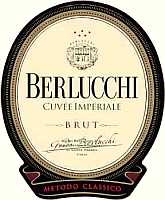
|
|
Cuvée Imperiale Brut |
|
| Guido Berlucchi (Italy) | |
| Grapes: Chardonnay (60%), Pinot Noir (30%), Pinot Blanc (10%) | |
| Price: € 12,00 | Score: |
| The wine shows a pale greenish yellow color and nuances of greenish yellow, good effervescence, fine and persistent perlage. The nose reveals clean and pleasing aromas that start with hints of banana and yeast followed by aromas of pineapple, acacia, bread crust, litchi and pear. In the mouth has good correspondence to the nose, a crisp and effervescent attack however balanced, intense flavors, good body, agreeable. The finish has good persistence with flavors of pear and pineapple. This sparkling wine is produced with the classic method. | |
| Food Match: Fish appetizers, Pasta and risotto with fish, Sauteed fish, Crustaceans | |
Camartina: Vertical TastingWe had a vertical tasting of three recent vintages of the renowned Querciabella's Camartina. A wine to the top of Italian enology since ever, a position widely confirmed by the result of our vertical tasting |
|
Among the wines of Tuscany a place of honor is certainly owed to Querciabella's Camartina that since many years it reached the top of Italian enology. We did a vertical tasting of three vintages of this renowned wine: 1997, 1999 and 2000. All the three vintages have shown an excellent level of quality as well as wonderful promises for a splendid evolution in the next years. What impresses of Camartina is its reliability and its precision which is always repeated: despite the differences of every single vintage, the result is always a great wine with exceptional class and personality which do not leave indifferent. The 1997 is splendid: despite of its 6 years of age, certainly too few for a wine like this, it shows an enviable youth which gives good promises for a wonderful aging. The same consideration can be done for 1999, whereas the 2000, the younger of the three, is characterized by freshness of aromas and flavors. Something to be certain of is that, just like the other two, the 2000 will be capable of giving wonderful emotions to the ones who will be patient in waiting great things to happen.
|
||||||||||||||||||||||||||||||||||||||||||
|
||||||||
|
DiWineTaste Polls
|
| |||||||
Privacy Policy | |||||||


| Copyright © 2002-2024 Antonello Biancalana, DiWineTaste - All rights reserved |
| All rights reserved under international copyright conventions. No part of this publication and of this WEB site may be
reproduced or utilized in any form or by any means, electronic or mechanical, without permission in writing from DiWineTaste. |